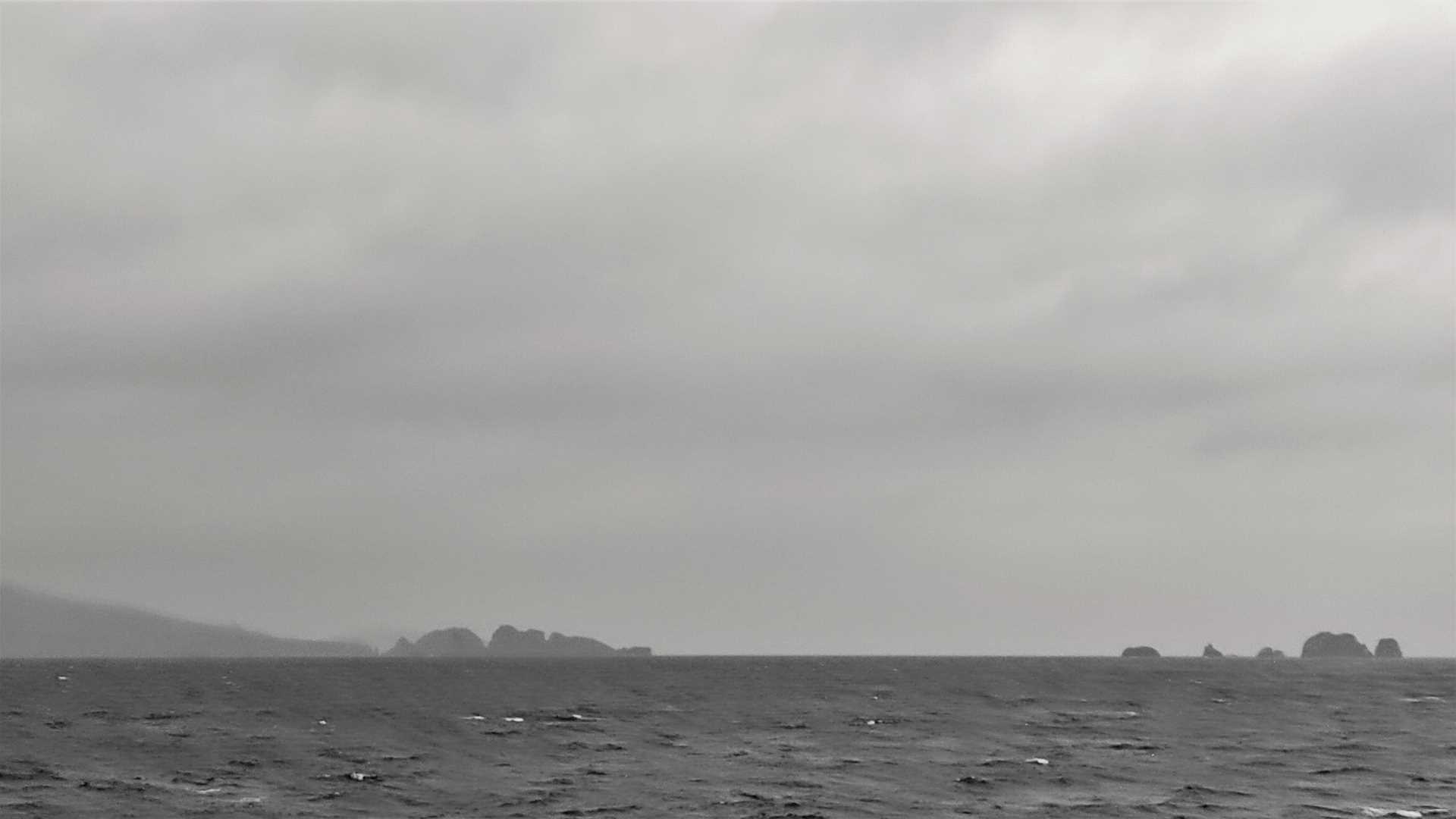Expedition leader Michael Jackson woke us for breakfast by announcing that we were approaching Cape Horn earlier than anticipated. We had a relatively smooth crossing of the Drake Passage with some gentle swells and moderate winds overnight. The wind direction gave us a nudge in the right direction, guiding us back towards the southernmost tip of South America.
After breakfast, we stepped outside to catch a glimpse of the rocky islands of Cape Horn through the fog. Seeing this infamous landmark at the end of the world feels like a privilege, as Cape Horn is synonymous with disaster and shipwrecks. Ferocious winds and churning seas make navigating around this headland treacherous, and the area has claimed the lives of many sailors attempting to ‘round the horn.’ On land, a sculpture of an albatross by Chilean artist José Balcells Eyquem stands as a monument to these lost souls. Accompanying the sculpture is a poem by Sara Vial that starts, ‘I am the albatross…’
The wandering albatross is an iconic species, and we’ve been accompanied by several during our crossings of the Drake Passage. Whether it’s the bird’s ability to soar with ease over a violent ocean with furious winds or the itinerant nature of its existence, there is something poetic and captivating about this animal. Albatrosses live for around 40-45 years, and the years they live are spent wandering a part of the world that is inhospitable to us.
This part of the voyage is bittersweet. The pace slows after a frenetic and thrilling few days in Antarctica. Michael Jackson gave a talk on climate change in the morning to provide a wider context for some of the issues faced in this mostly pristine part of the world. Expert Susan Seubert gave us her hot tips for processing a mountain of raw images once we get home. It may be a while before we are able to fully process what our eyes have seen and what we have fully experienced over the course of this expedition.









